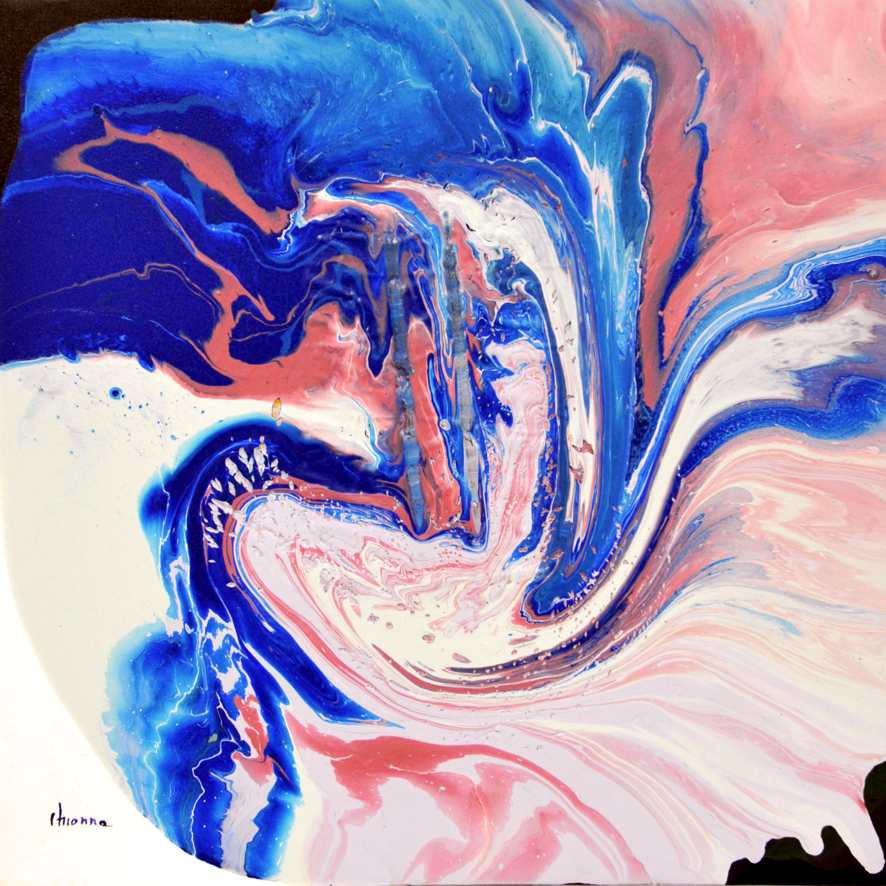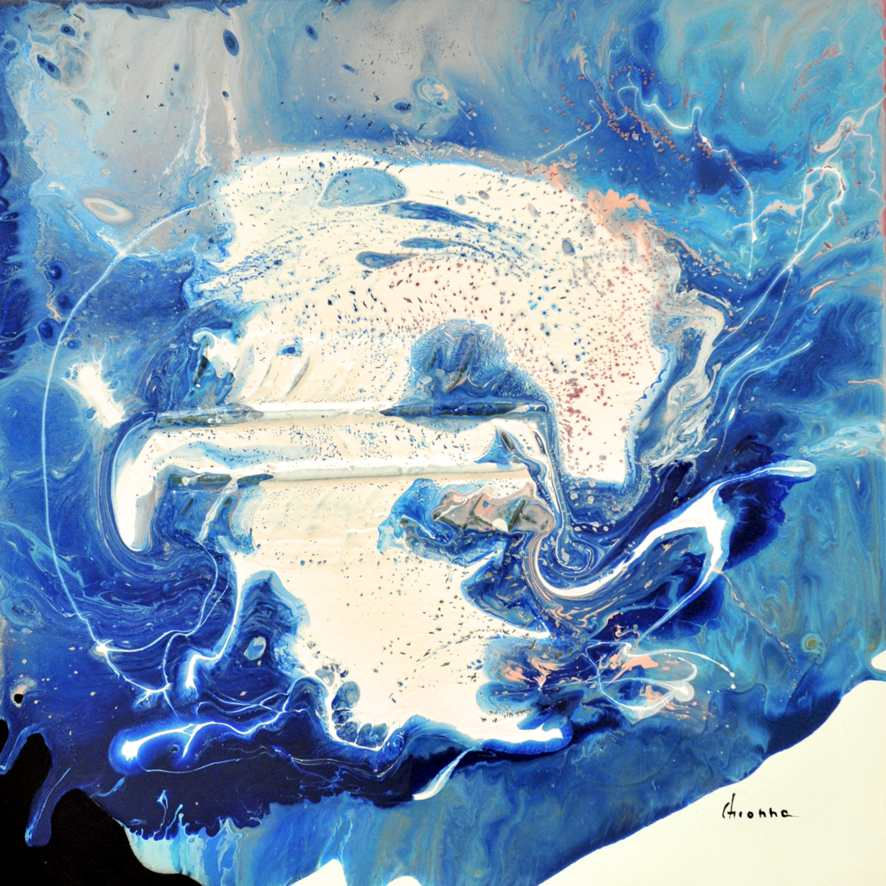Leonardo Chionna

BIOGRAPHY
Leonardo Chionna was born at Latiano (BR) on 3 August 1957. A contemporary sculptor and painter, he has been active for some time on the Italian artistic scene. He began his career when still very young. He has organised numerous exhibitions and taken part in various artistic events, receiving acknowledgements and prizes. In the Eighties he frequented the poets of the “poetry workshop” at Lecce University, one of whom was Salvatore Caliolo, founder of the magazine “L’incantiere”. At the same time he enjoyed the friendship of one of the greatest philosophers of our time, Arrigo Colombo, collaborating with him in the “Utopia” movement which he founded. These cultural influences were decisive in forming Chionna’s art. His first work date back to the Seventies, with theme rich in original suggestions that transformed Chionna into a shaman figure of contemporary art. Various art critics and historians have taken an interest in the artist, such as Gino Spinelli de’ Santelena, G. Rubino, R. Rizzi and Vittorio Sgarbi. Articles about him have appeared in the press: in the Gazzetta del Mezzogiorno, the Corriere del Giorno, Rome, the Quotidiano di Puglia, Arte, Disegno e Pittura.PERIODSIn the Seventies, shunning any commercial ambition, the artist showed his works in places where they could be contemplated immersed in spiritual silence: churches, castles, woods and deserted beaches. We especially recall an exhibition on floating rafts that transported sculpture into the open sea, carried along by the current like boats without a sail, symbol of the greatest freedom, abandoned to their fate, where they sank, keeping the secret of their creativity, eternally, until the day when they can be recovered. In recent years his research has been focussed on “The New Atlantis”, a project dear to the artist, resulting from his continuous inclination towards a more and more objective and essential language, which finds fulfilment in a series of works in terracotta and bronze. Works that seem to come from a distant future, though they bear traces of a remote past that is nevertheless familiar to our contemporaries. Chionna materialises his own Utopia, the possible new bronze of a present which the artist feels has now reached its twilight.SUBJECTS:
Critics have often defined Chionna’s art as “courageous”, but his works look towards the future, describing it in plastic forms. His works testify to a research that is projected out of its time, from which it looks to our history, traces of ancient and modern civilisation, old and new Utopias in forms and elements that come from afar, travelling through time, and which enable the onlooker to probe the inside of matter, penetrating its geometric casing. Archetypes of a distant future that give a glimpse of a “fossilised” past which time brings to light, becoming its external casing.
TECHNIQUES:
sculpture and oil paint. EXHIBITINS Expo Arte, Bari; Apant’08, Naxos; Artefiera, Catania; Vitarte, Viterbo; Arte Fiera, Genoa; Arte Fiera, Florence; Fortezza Da Basso, Florence; Arte Fiera, Parma; Arte Fiera, Padua; Garda Golf, Desenzano sul Garda; Castel Gandolfo, Rome; Golf Club Ugolino, Florence; Assisi Endurance Life Style, Assisi.

mixed technique on canvas cm. 60 x 60

mixed technique on canvas cm. 60 x 60

mixed technique on canvas cm. 60 x 60

mixed technique on canvas Cm. 80 x 80

mixed technique on canvas Cm. 80 x 80

mixed technique on canvas Cm. 80 x 80

mixed technique on canvas cm. 90 x 80

mixed technique on canvas cm. 90 x 80

mixed technique on canvas cm. 120x100

lost wax bronze fusion Cm. 56x 7.7 x 8.7

lost wax bronze fusion Cm. 31 x 20 x 20

lost wax bronze fusion cm. 43 x 22 x 5

lost wax bronze fusion Cm. 31 x 20 x 20

lost wax bronze fusion Cm. 23 x 6

lost wax bronze fusion cm. 48 x 10 x 5.5
Criticism
INVESTIGATIONS OF THE FOURTH MILLENNIUM by Paolo Levi
Leonardo Chionna is the artist of three-dimensional signs, of sculptures with an archaic appearance, of dreams barely held back, of prophecies made of pure matter. We are faced with an artist who announces a fourth Millennium in the near future, showing archaeological finds and the degradations that from that future, trace back to our present. You can feel in his research the need to immerse oneself into the mystery of time in a materialistic key, revealing it to himself and to us, overturning a prophetic insight into a some kind of digging in search of the debris and messages that we will leave for posterity. He contemplates therefore the object of his research with a scientist's detachment, measuring the inevitable mutability of the material along the time of history, renewing the old philosophical axiom that nothing is created, nothing is destroyed, instead everything changes. It is hard to answer the question as to whether Leonardo Chionna is an abstract or figurative artist, and it would still be too hasty to confine him in any of the two terms that, especially in this case, are completely generic. It is therefore good that our sculptor remains partly elusive. In truth he has many roots, the first of which is a kind of figuration left in abeyance – the fossil traces of the tread of a tyre are the possible reconstruction of a hypothetical event. On top of this you add the atonal rhythm of colour, and the extraordinary quality of the warm surface of the bronze coloured material which far from any temptation to decorativeness, proclaims a beautiful message of clarity, precision, and formal balance. Cryptic and restless, this artist proposes to the observer the creative vitality of an archetype, that of Atlantis, where the utopia of a golden age is intertwined indissolubly to the idea of a downfall with no way out, and without illusions about the fate of humanity. Chionna belongs by right to the Italian school of the second half of the twentieth century , having opted, to be exact, for a formal dictation of classical origin, where different forms apppear combined with rigour, partly abstract and partly allusively figurative, and reinventing a sort of metaphysics of absence. We are here in front of the work of a manipulator of the material, a creator of twofold symmetrical and asymmetrical moments, of complex rhythms, of solemn subjects that tend to be vertical, in a balanced formal logic. In each of these researches, the archaeological memory exceeds the natural or anthropologic moment, to land in ambiguous parts of an elsewhere culturally close to our present, which, moreover, evades easy calls to the daily news or the ideology of commitment; indeed, here it is evident the willingness of the artist not to betray the poetry that inspires him, and that he continues to celebrate in every new elaboration. Each work then opens therefore to an instant decoding, as it represents the expression of an inner dialogue or a question. The freedom of the modelling does not, under any circumstances, refer to nature, but rather to the visualization of a mental universe or of a space-time paradox, where past and future interfere with the certainties of our present. Author of symbolic and abstract forms, at the same time, explicit in their appearance of datable and classifiable finds, this artist builds his cultured utopias based on a subjective truth, that the observer receives through stylistic and conceptual integrity of the form, establishing a relationship of sharing of theoretical assumptions that bring it to life.
Nuova Atlantide
 |  |  |
|---|---|---|
 |  |  |
 |  |  |
 |  |  |
 |  |  |
 |  |  |
 |  |  |
 |  |





